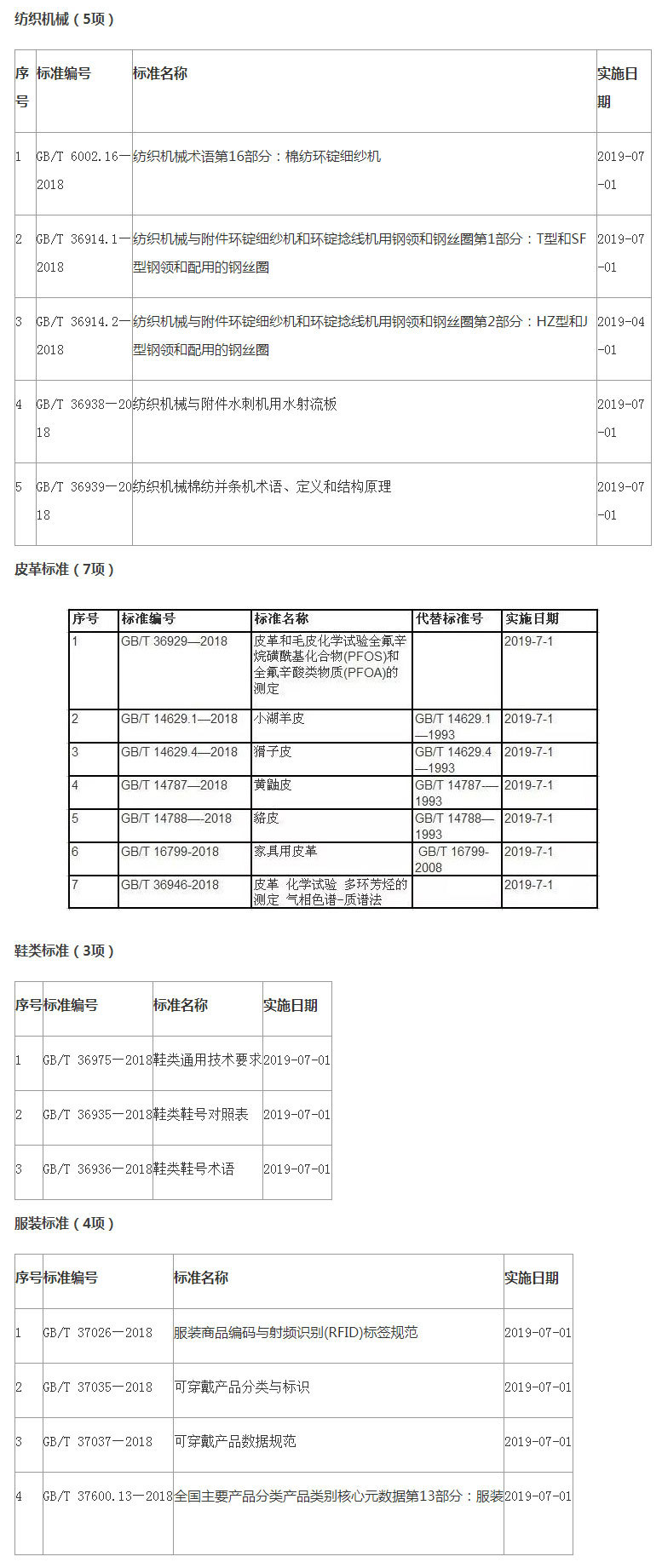45 national standards for textiles were released and will be implemented gradually starting from April 2019.
Release time:
2019-01-10
Recently, the State Administration for Market Regulation and the National Standardization Administration approved 646 national standards. There are 45 textile-related standards, including 9 textile testing technology standards, 6 dye testing standards, 11 raw material standards, 5 textile machinery standards, 7 leather standards, 3 footwear standards, and 4 clothing labeling standards. Among them, 1 raw material standard and 1 textile machinery standard will be implemented starting from April 1, 2019, while 9 textile testing standards, 10 raw material standards, 4 textile machinery standards, 7 leather standards, 3 footwear standards, and 4 clothing standards will be implemented in 2019.



Related News
Several details to pay attention to during the operation of the ribbon printing machine
The ribbon printing machine is a new type of equipment developed in the domestic printing field, suitable for applications such as ribbons, mobile phone lanyards, guardrails, belts, elastic bands, shoulder straps, gift ribbons, pet leashes, and other products. The technical efficiency of the new multifunctional ribbon printing machine will continue to improve. Therefore, providing a ribbon printing machine with high work efficiency is also a way to save production costs. So, what should we pay attention to when the ribbon transfer printing machine is operating normally? 1 First, the ribbon printing machine equipment should be properly positioned during operation, and there should be no obstructions in the functional areas of the upper and lower conveyors.
2019-01-10
Recently, the State Administration for Market Regulation and the National Standardization Administration approved 646 national standards. There are 45 textile-related standards, including 9 textile testing technology standards, 6 dye testing standards, 11 raw material standards, 5 textile machinery standards, 7 leather standards, 3 footwear standards, and 4 clothing labeling standards. Among them, 1 raw material standard and 1 textile machinery standard will be implemented starting from April 1, 2019, while 9 textile testing standards, 10 raw material standards, 4 textile machinery standards, 7 leather standards, 3 footwear standards, and 4 clothing standards will be implemented in 2019.
2019-01-10
Why did the Industrial Revolution first occur in the cotton textile industry?
The five major livelihood issues of 'clothing, food, housing, transportation, and daily necessities' prioritize clothing and food. After more than sixty years of rapid and continuous development, China's manufacturing industry has become globally recognized as the 'world's factory.' The textile industry is no exception. China's textile industry has developed into the 'world's factory' and formed a grand pattern of 'clothing the world.' Reflecting on history, why did the textile industry develop first during the Industrial Revolution, leading later industrialized countries to follow the industrialization process of the textile industry, thus driving other industries towards modernization? The technological iteration of the cotton textile industry accelerated the use of machines and mechanical power.
2019-01-10
The Revival Path of China's Textile Industry
Currently, China holds a leading position in the global textile industry, being not only the largest producer but also the country with the most complete industrial chain and the widest range of categories. Data shows that in 2017, China's chemical fiber production reached 49.1955 million tons, accounting for over 70% of the world's total; the output of garments from large-scale enterprises was 28.781 billion pieces, equivalent to providing 6.89 pieces of clothing for each person in the world. Referring to the current development trend of China's textile industry and the '13th Five-Year' development plan, Jiang Hui, president of the China Textile Import and Export Chamber of Commerce, stated that China's position as the world's largest textile exporter will last for a decade.
2019-01-10

